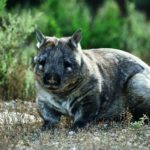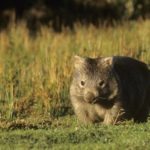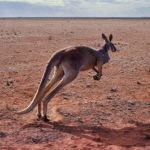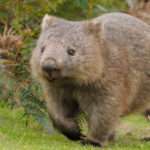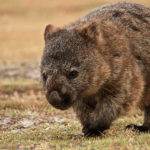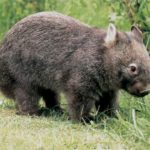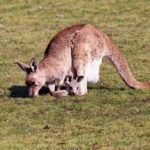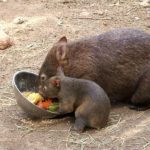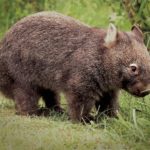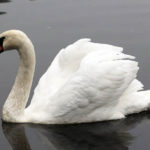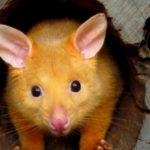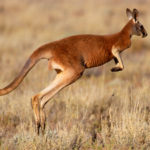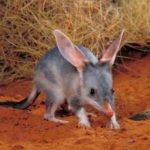Baby wombat
 Wombats also carry their cubs in their bags – but not on their stomachs, like a kangaroo – but on their backs. All in order to during the “architectural works” not to sketch a child on the head. The female is born only one cute cub, which grows from six to eight months in a bag, and for another year keeps close – until it reaches puberty.
Wombats also carry their cubs in their bags – but not on their stomachs, like a kangaroo – but on their backs. All in order to during the “architectural works” not to sketch a child on the head. The female is born only one cute cub, which grows from six to eight months in a bag, and for another year keeps close – until it reaches puberty.
Wombats are monogamous, and if there is enough feed and water multiply throughout the year. In nature, their life expectancy reaches 15 years, in captivity, a good-natured beast can reach up to 25.
Metabolism in wombats is slow and very effective – they are inferior only to camels for the economical use of water. Judge for yourselves: they only need 22 ml of water per kg of body weight per day, which is four times less than kangaroos need. And I’m digesting the wombat for two weeks!
Its diet includes roots, mosses, mushrooms, berries, roots, but the main dish in the menu is young shoots of herbs. To select the right plants, the wombats use a divided upper lip. The front teeth, resembling the teeth of rodents, help the animals to cut off even the smallest green shoots under the root.
Since wombats lead an nocturnal lifestyle, they rely not so much on sight as on the sense of smell in choosing a meal.



